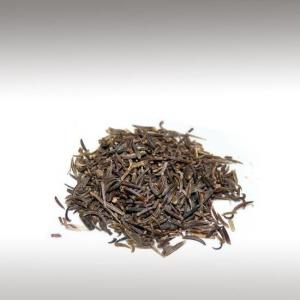
BLACK CUMIN SEED OIL (BUNIUM BULBOCASTANUM) - BASE OILS

BASE / GENERAL DATA
Information submited: January 30, 2015 Modified: April 3, 2018 By: OperaDreamhouse
Bunium Bulbocastanum is a plant species in the family Apiaceae. It is related to Cumin (Cuminum Cyminum) and commonly called Black Cumin, Blackseed, Black Caraway, or Great Pignut, and has a smoky, earthy taste. It is often confused with Nigella Sativa (which is also called Black Cumin, Blackseed).
The plant grows wild in a wide range from southeastern Europe east to southern Asia. It reaches about 60 centimetres tall and 25 centimetres wide.
The fruit of plant, the Black seeds is used for extracting the oil. Black seed contains over 100 valuable nutrients including significant proportions of protein, carbohydrates and essential fatty acids.
Fruits: Both the dark brown colour and the slender crescent shape are characteristic. In Kashmir, the root is eaten as a vegetable.
The most common Indic name for this spice is Kala Jira - "Black Cumin". The same name is, most often in English, sometimes given to an entirely unrelated spice, Nigella (also called Onion seed). Bengali Kalo Jira and similar names in South India actually refer to Nigella. Nigella is popular in the Middle East and Northern India, particularly Bengal.
Black Cumin, in India also called Kashmiri Cumin, is not much known outside Iran, Tajikistan, Afghanistan, Pakistan and the western part of Northern India (Kashmir, Punjab). In use for over 4,000 years, Cumin was mainly used for its digestive properties and as a spice.
Chemical strukture:
Thymoquinone, nigellone, oleic acid, linoleic acid, calcium, iron, potassium, zinc, selenium, magnesium, Vitamin A, Vitamin B, niacin, Vitamin B2 and Vitamin C.
The plant grows wild in a wide range from southeastern Europe east to southern Asia. It reaches about 60 centimetres tall and 25 centimetres wide.
The fruit of plant, the Black seeds is used for extracting the oil. Black seed contains over 100 valuable nutrients including significant proportions of protein, carbohydrates and essential fatty acids.
Fruits: Both the dark brown colour and the slender crescent shape are characteristic. In Kashmir, the root is eaten as a vegetable.
The most common Indic name for this spice is Kala Jira - "Black Cumin". The same name is, most often in English, sometimes given to an entirely unrelated spice, Nigella (also called Onion seed). Bengali Kalo Jira and similar names in South India actually refer to Nigella. Nigella is popular in the Middle East and Northern India, particularly Bengal.
Black Cumin, in India also called Kashmiri Cumin, is not much known outside Iran, Tajikistan, Afghanistan, Pakistan and the western part of Northern India (Kashmir, Punjab). In use for over 4,000 years, Cumin was mainly used for its digestive properties and as a spice.
Chemical strukture:
Thymoquinone, nigellone, oleic acid, linoleic acid, calcium, iron, potassium, zinc, selenium, magnesium, Vitamin A, Vitamin B, niacin, Vitamin B2 and Vitamin C.

SPIRITUAL PRACTISES DATA

MEDICINE / HEALTH DATA

BEAUTY / COSMETICS DATA

FOOD / COOKING DATA
COMMENTS
No comments.


